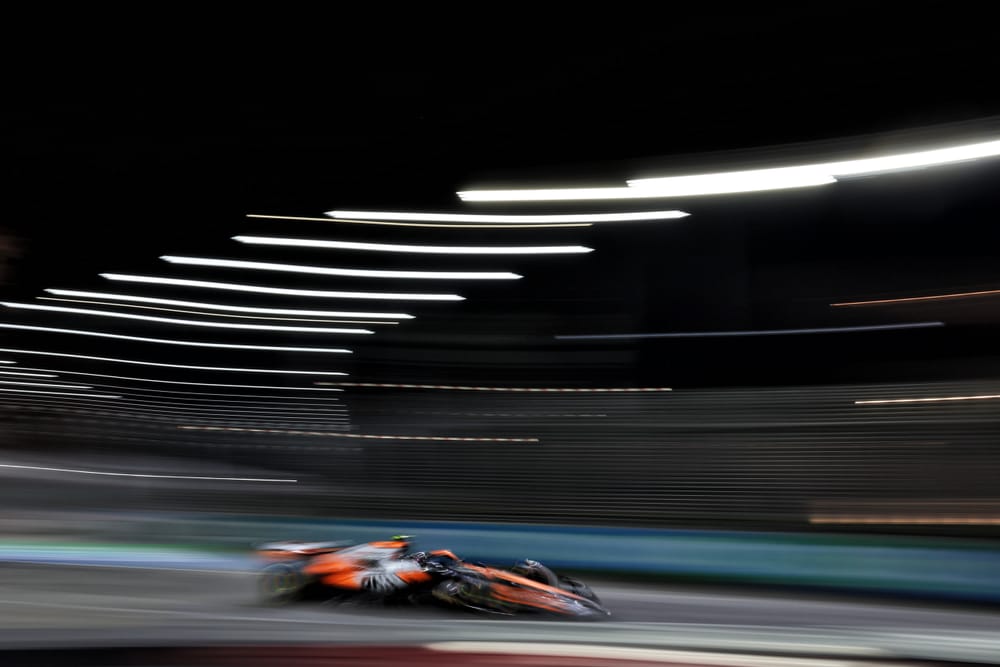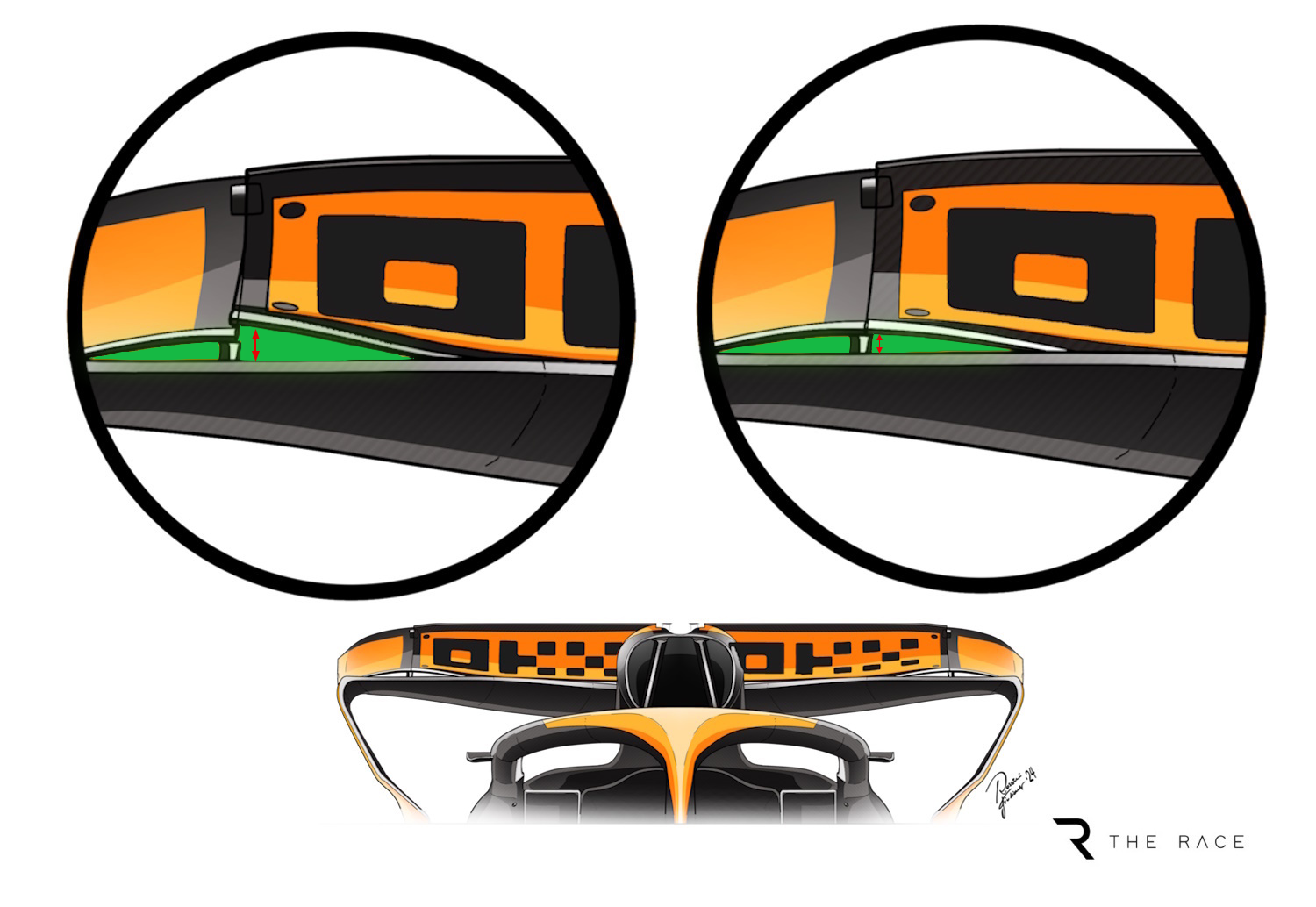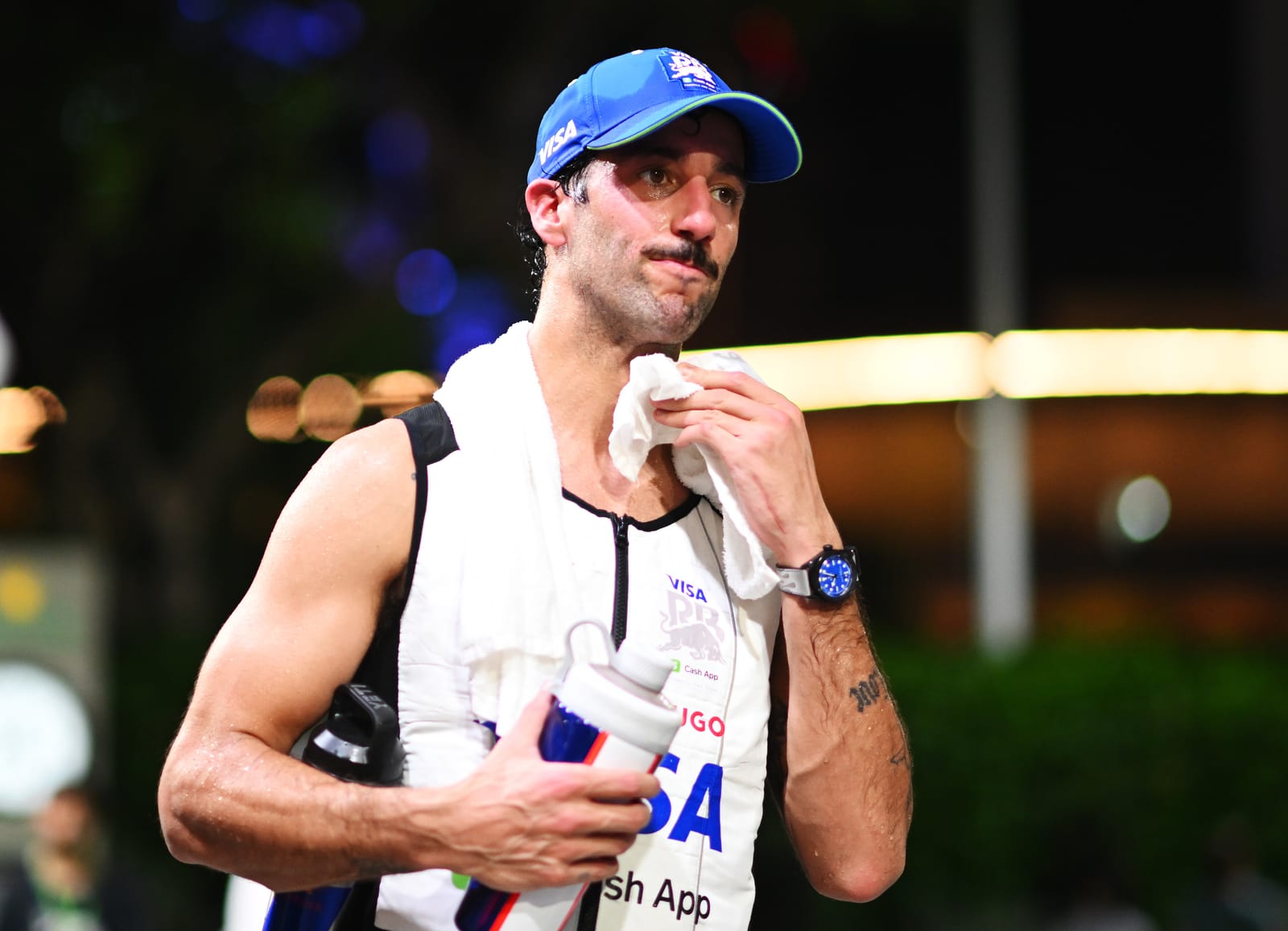Up Next

This was an even more dominant Lando Norris than at Formula 1’s previous high downforce track of Zandvoort. Around the humid Singapore streets there was no one to touch him.
There was a moment, four-five laps into the race, where up and down the pitwall there was general surprise that he was pushing as hard as he was, almost two seconds ahead of Max Verstappen by the end of the fifth lap.
Surely he was pressing the medium tyre too hard for the optimum strategy? Except that he wasn’t pushing. He was at this point just waiting for his tyres to come fully up to temperature. Even doing this he was pulling away from the Red Bull at 0.5s per lap. Which in turn was well clear of the two Mercedes.
It was lap nine when Norris was told he could begin to push. He duly lapped a full 1s faster than Verstappen. That’s how far ahead the MCL38 was around here, a high-downforce track where it’s all about balance and driveability.
That performance and the fact that this was the first Singapore Grand Prix without a safety car meant that if he’d wished, Norris could have made a late pitstop and rejoined without losing the lead to Verstappen (he was 29s ahead with eight laps to go).
If he’d done that he’d have taken the extra point for fastest lap which was denied him by Daniel Ricciardo – in quite possibly his last grand prix – making the late stop in his RB and finishing last.
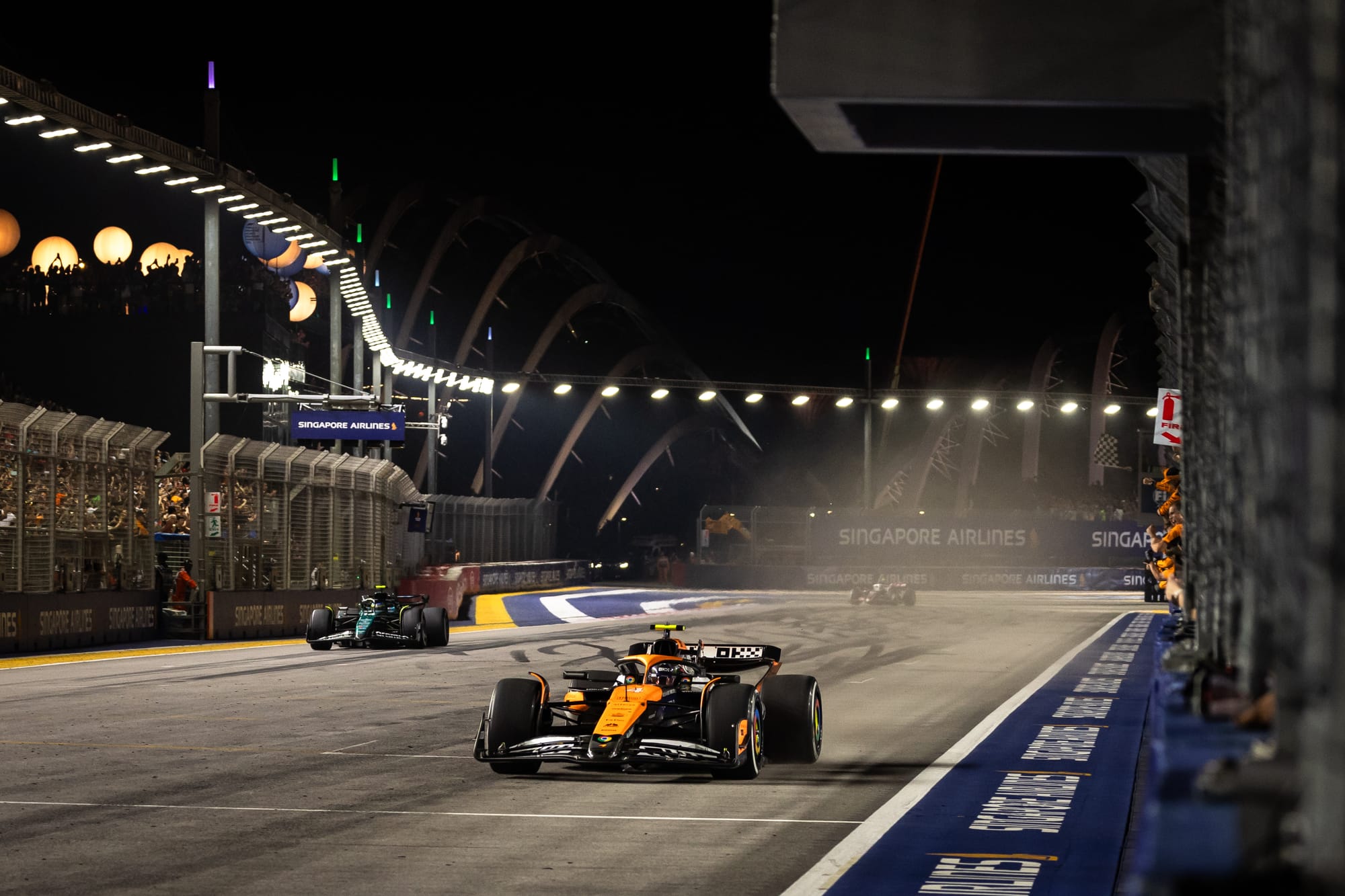
“I knew that all I had to do all weekend was go out and deliver. Because the car was so mega,” said the three-time winner, with his points deficit to Verstappen now down to 52 points with six races to go.
There were a couple of close shaves along the way. He ran too deep into Turn 14 on the 28th lap for his old front tyres and actually glanced the front wing lightly on the wall. On the 46th lap he lightly snagged his left-rear on the entry to Turn 10 (where George Russell came to grief last year).
This was a greater level of Norris dominance even than Zandvoort, the last high-downforce track. McLaren team principal Andrea Stella accepts that the car is even stronger on such tracks than on the low-downforce circuits such as Monza and Baku, even without the help of a ‘mini-DRS’ wing.
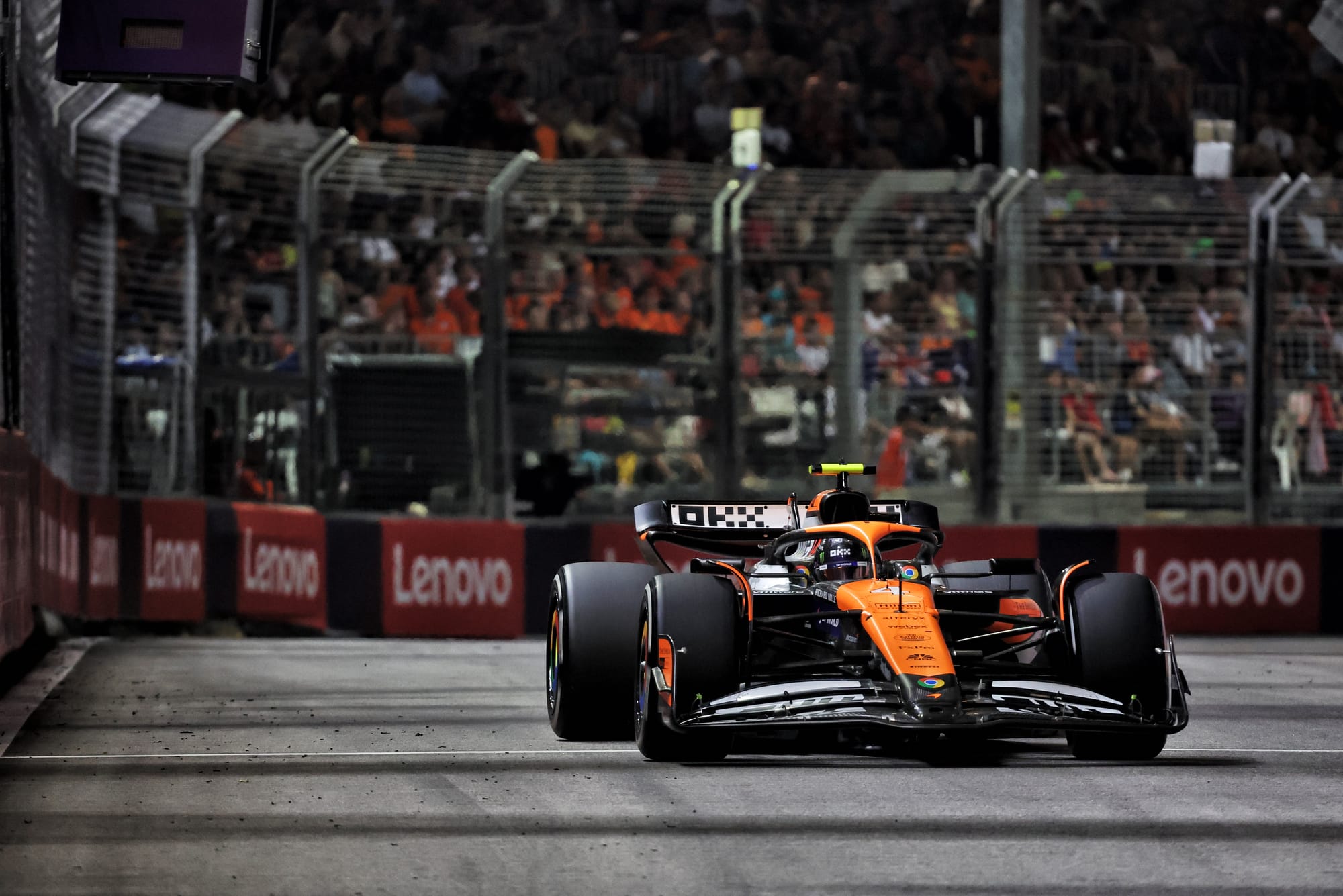
“I think at this high level of downforce we are very competitive,” said Stella.
“Hungary and Zandvoort were both dominant performances. It has better aero efficiency across the grid but at low-drag the efficiency of the Ferrari and Red Bull is more comparable to our car.
“It’s true we have invested more heavily at this level of downforce than we have done at lower downforce although at those tracks we have made progress in retaining downforce when reducing drag.”
McLaren’s high downforce superiority is derived from its great balance when running those bigger wings, an advantage which multiplies with its effect on tyre degradation.
This is with a generation of car inherently difficult to balance, a generation which Red Bull has found can fall badly out of balance as it’s developed to produce more total downforce.
Mastery of aero elasticity gave McLaren its rear wing ‘mini DRS’ advantage on the low-downforce tracks. But on the high-downforce tracks that same mastery has given it a front wing which deforms perfectly to be powerful on slow corners with an aggressive flap angle, without it then being too powerful on high-speed corners as the flap bends, reducing the downforce of the wing to give the centre of pressure appropriate to the speed of the corner.
COULD FERRARI HAVE WON?
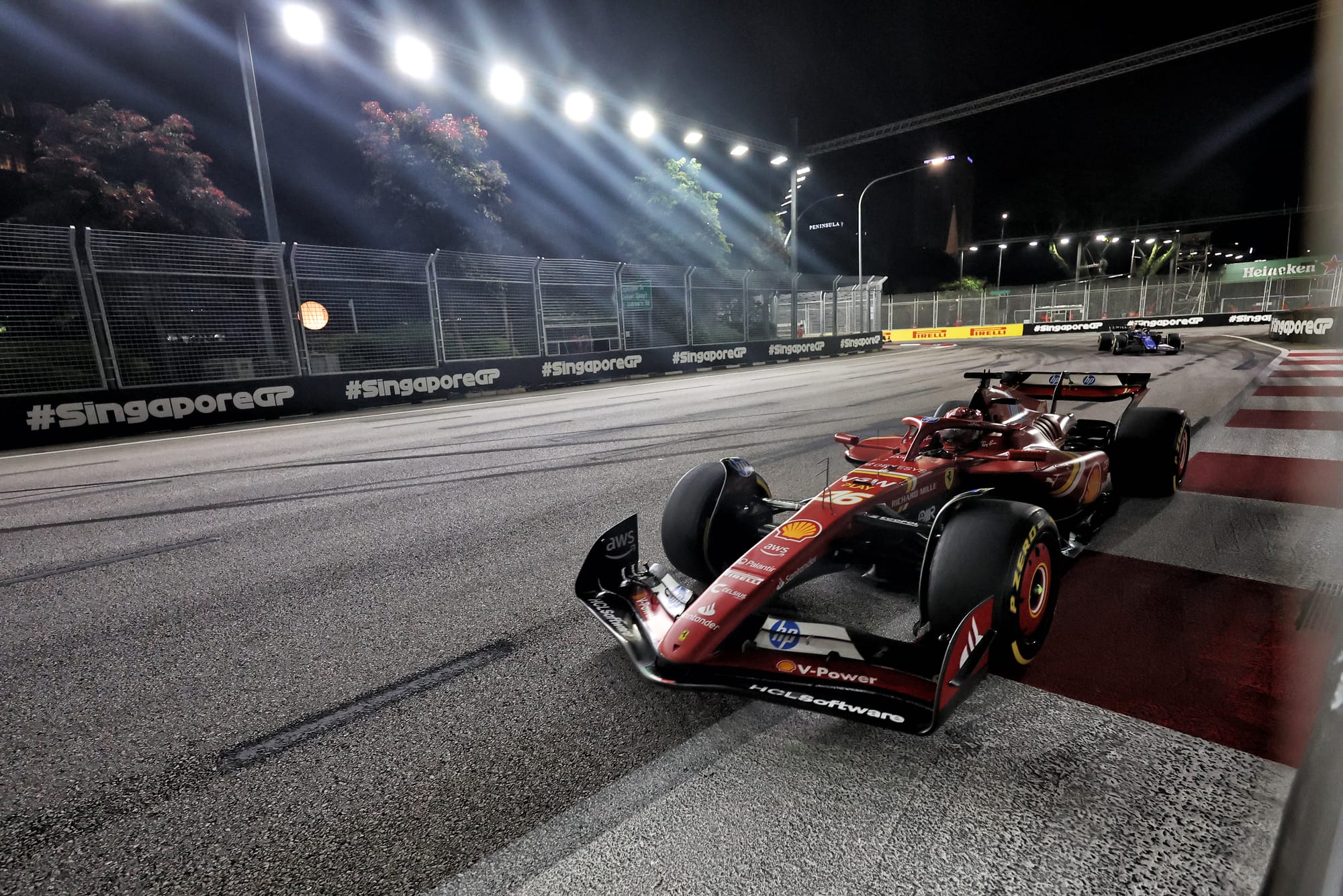
Norris’ advantage was even bigger than was the case at Zandvoort, but at least part of that can be put down to the fact that McLaren’s closest rival on pure performance in Singapore – Ferrari – failed to exploit its potential in qualifying and started ninth and 10th as a result.
Charles Leclerc, stuck behind the over-achieving Haas of Nico Hulkenberg for most of the first stint, fell 40s off the lead but showed that in clear air he had Norris-matching pace on the hard tyre in the second stint. Just as he had on the softs and mediums on Friday.
We need to be careful of reading too much into that. As Ferrari’s Frederic Vasseur said, “I don’t know how much that was Norris backing off because he had such a big lead.”
But the Ferrari probably was an inherently faster car than the Red Bull around Singapore, but the Ferrari confusion over tyre temperatures on Saturday and Verstappen’s brilliant display in putting the RB20 on the front row skewed the picture.
It was a very lonely race for Verstappen once he’d gone tyre-to-tyre with the soft-tyred Lewis Hamilton into Turn 1 to defend his second place. The gaps to Norris in front and to Hamilton behind both stretched throughout the opening stint. Hamilton’s choice of the soft as a starting tyre was predicated totally on beating Verstappen off the startline. He took the pain of that decision without pulling off the reward. Mercedes brought him on early (lap 17 of 62) believing his pace would be stronger on the hard. It wasn’t.
The Mercedes – either in Hamilton’s hands or George Russell’s – was just not quick on race day and its relatively good qualifying positions on the second row were just a further consequence of Ferrari having got its tyre preparation wrong on Saturday.
So Hamilton was left with a very long (45 laps) second stint on hards which did not work well either. But the mediums wouldn’t have had a 45-lap range. Russell pitted 10 laps later and comfortably overcut past the tyre-struggling Hamilton. But didn’t have the pace to keep Oscar Piastri’s McLaren behind him.
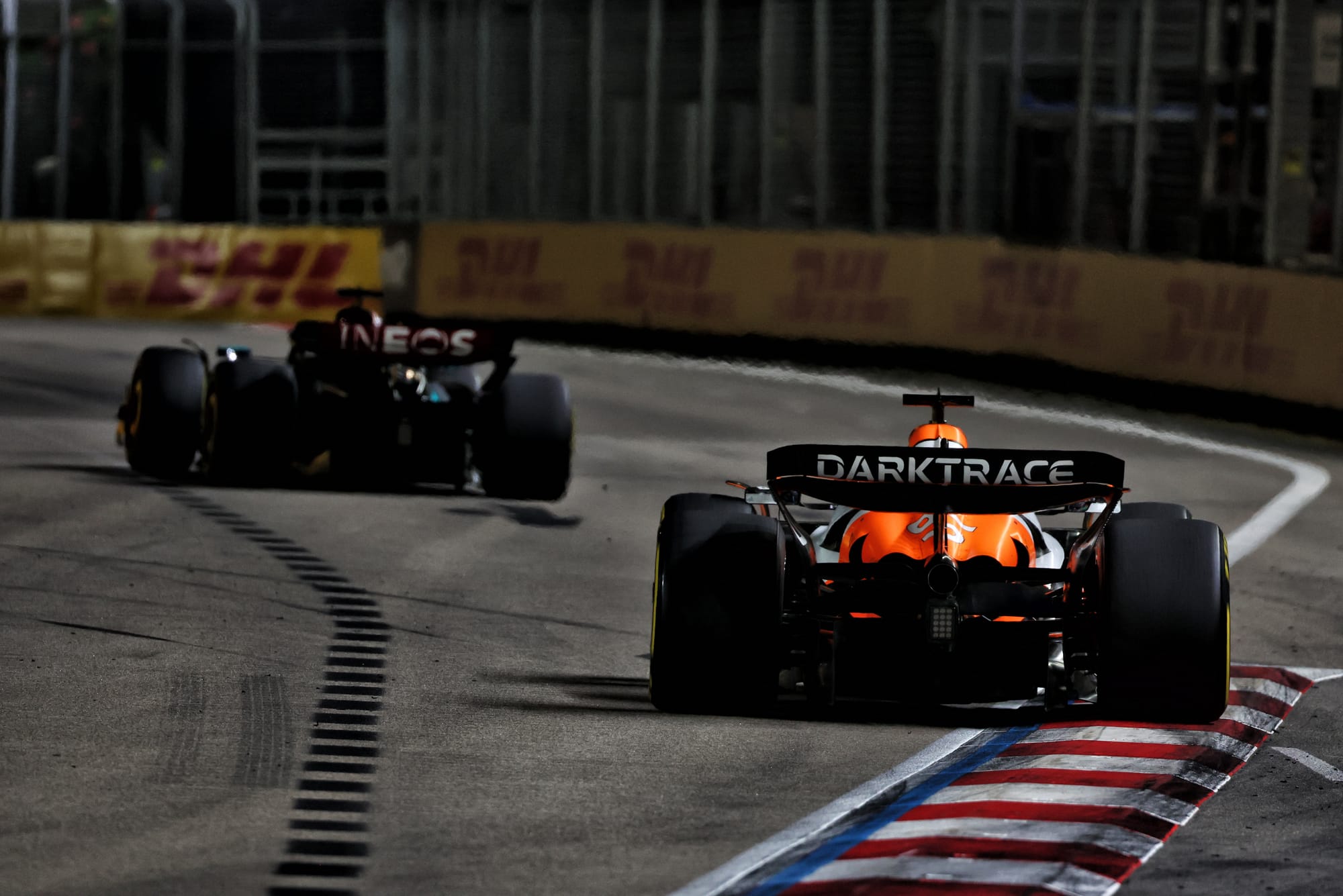
Like Ferrari, Piastri had under-qualified and shouldn’t really have been behind the Mercedes (had he repeated his Q2 he’d have been on the front row). Unable to pass them in the first stint, he flew past them in the second by waiting an extra 11 laps after Russell’s stop and thereby having so much more tyre grip in the second stint. For a time Piastri was even closing on Verstappen, but the Red Bull’s pace on the hard was strong enough that Max was able to shut that challenge down.
Russell then had his hands full with Leclerc’s recovering Ferrari (another late stopper and therefore with a big grip advantage subsequently). Once Leclerc had found a way past Fernando Alonso’s Aston Martin (for a second time, as the Aston had undercut back ahead at the stops) and the old-tyred Hamilton, he quickly caught, then remorselessly hounded Russell who defended robustly for the last six laps and retained the fourth place.
Carlos Sainz’s weekend was dominated by his Q3 crash. A messy first corner put him in the midfield. An early stop was an attempt to spring him out of that but 49 laps on his hards meant it was a slog coming through to pass Hulkenberg and Alonso for a distant seventh.
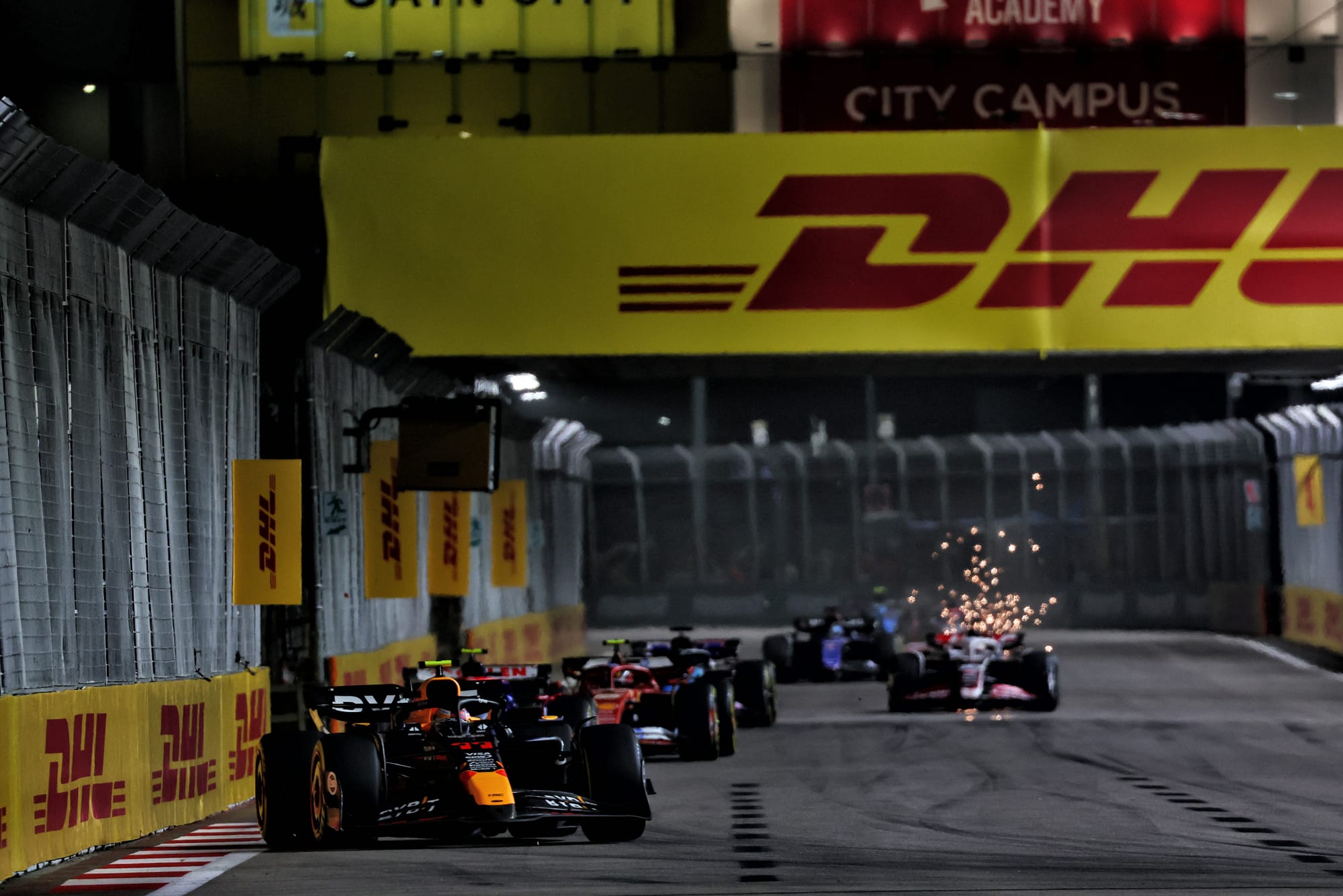
Sergio Perez – from the Q2 part of the grid – took the final point after struggling for most of the first stint to find a way by the impressive Franco Colapinto. He undercut ahead for 10th but then failed to breach the defences of Hulkenberg, keeping him off the back of the eighth-place Alonso.
Norris knew how good the McLaren was going to be around here. But he also knew how good he would be. Now that winning races is becoming more familiar to him, maybe he’s already relaxed into a groove which could see him going on a run of them.
“The car's been mega for a good amount of time,” he said, exerted but relaxed.
“I've not been able to come out on top for quite a few of them when I felt like I had the pace and I had the ability to do.
“So some of that is down to being my own fault and not executing things well enough. So I've paid the price for not doing a good enough job at times.
“But when I lead after Turn 1 and things are a bit more straightforward then we can have a day like today.”

